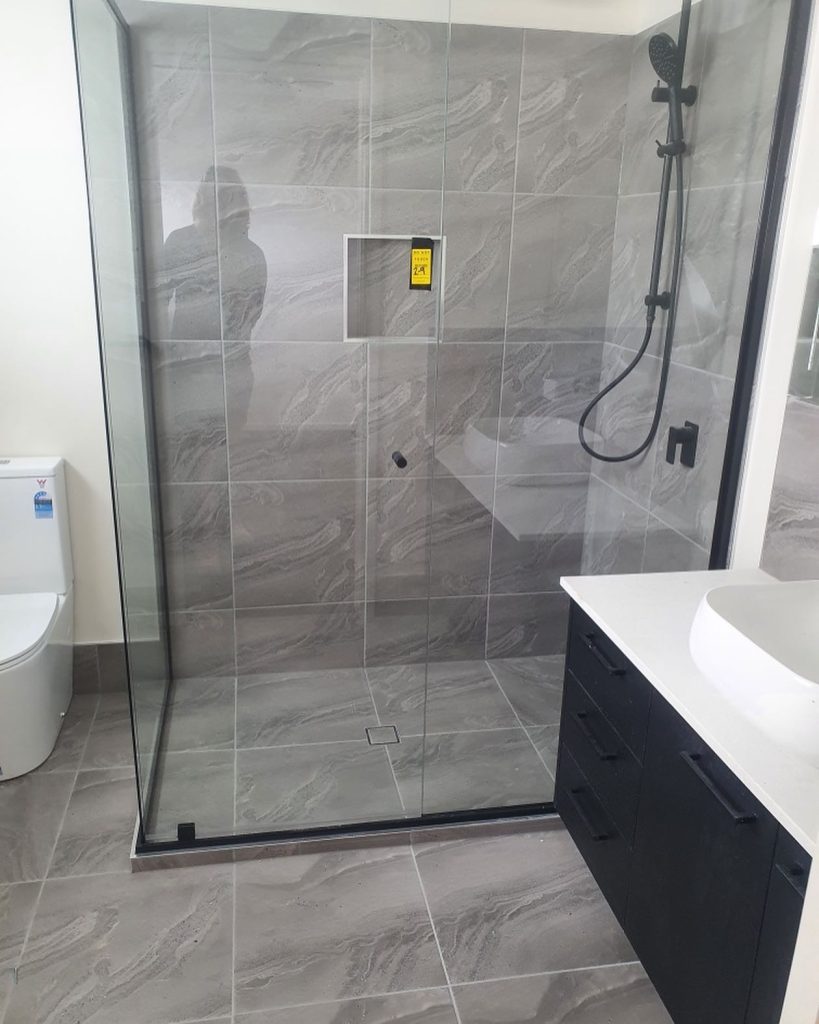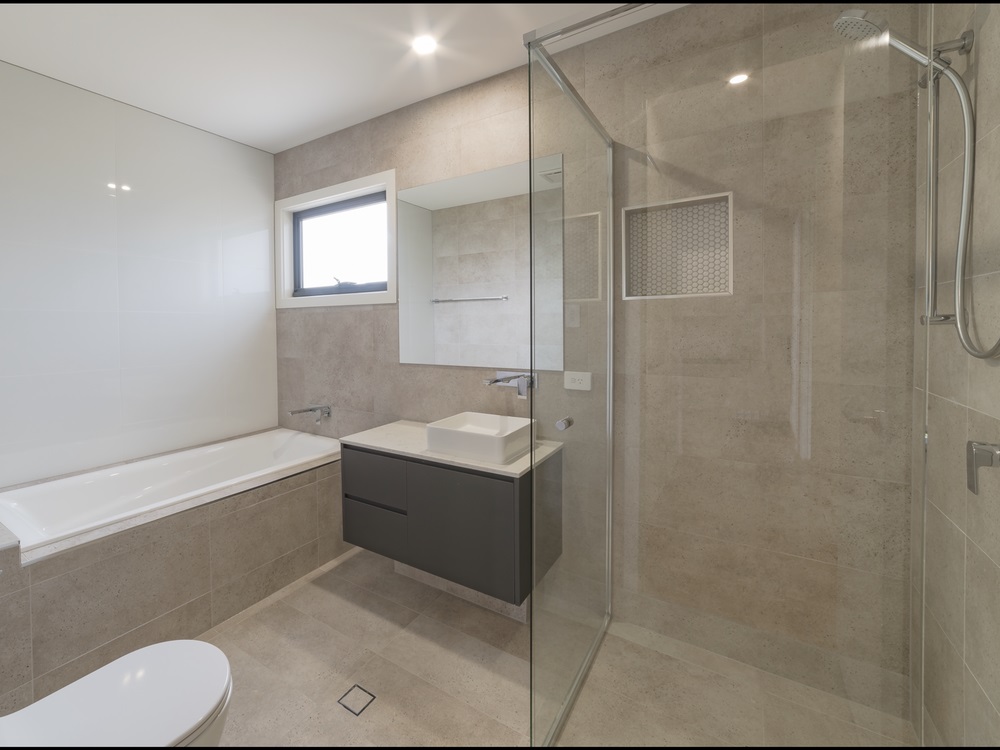Essential Strategies for Selecting the Perfect Bathroom Tiles: When it comes to your bathroom flooring, prioritising porcelain tiles is essential due to their durability and water resistance. Assess the thickness of the tiles that are ideal for both wall and floor applications, ensuring they meet your aesthetic and functional needs. It is crucial to ensure batch consistency for colour matching, which avoids unsightly mismatches throughout your design. Additionally, verify the slip ratings of tiles to ensure safety on your bathroom flooring, especially in wet conditions. Finally, budget wisely for feature areas in your space to create stunning visual impacts while opting for standard-sized tiles to keep installation costs manageable.
Choosing the right tiles for a bathroom renovation can be quite daunting, given the vast array of options that are often quite similar in shades of white, beige, and grey. Differentiating among these choices becomes particularly challenging, especially when considering the varying price points. By grasping the intricacies of tile pricing and identifying the crucial factors that influence your selections, you can make informed decisions. This knowledge will help you avoid costly mistakes, conserve funds, and ultimately achieve a high-end finish that accurately reflects your personal style and preferences.
This comprehensive guide serves as a valuable resource for Brisbane homeowners, empowering them to make intelligent, budget-conscious decisions when it comes to selecting bathroom tiles.

Understanding the Key Factors Influencing Tile Pricing and Variability
Evaluating Material Composition for Maximum Durability and Performance
Porcelain tiles are widely celebrated for their density, lower porosity, and superior durability when compared to conventional ceramic tiles. Made from finer clay types that are fired at higher temperatures, these tiles exhibit enhanced strength, which often correlates with a premium price tag. In bathroom environments where exposure to moisture and the need for longevity are critical, choosing porcelain tiles often proves to be a wise investment. However, it’s worth noting that ceramic tiles have undergone significant advancements in recent years, offering cost-effective options that are ideal for walls and areas with less foot traffic, thus providing further choices for homeowners.
The Impact of Tile Manufacturing on Quality and Cost: What You Need to Know
The overall quality of tiles extends beyond mere material composition; the manufacturing process significantly affects their characteristics and performance. Single-fired tiles, for instance, are generally less expensive but may exhibit uneven quality throughout. In contrast, double-fired tiles provide richer finishes, more vibrant colour options, and heightened durability, making them a worthy investment for discerning homeowners who seek excellence in their renovations. This understanding of manufacturing processes can help you make an informed choice, ensuring that your selected tiles meet both aesthetic and functional needs.
Tiles that feature rectified edges are cut with precise machinery, ensuring uniformity in size and shape. Although these tiles tend to be pricier, they allow for minimal grout lines, creating a seamless and contemporary appearance that many homeowners prefer for modern bathroom designs. The benefits of investing in such tiles can greatly enhance the overall look and feel of your space.
The Importance of Tile Thickness for Structural Integrity and Longevity
When choosing tiles, it’s vital to comprehend that tiles designed for flooring applications need to be thicker and more robust than those intended for wall installations. For instance, wall tiles typically range from 6 to 8mm in thickness, while floor tiles generally fall between 8 and 12mm. Understanding these specifications will help you select the right tiles for your specific needs, ensuring both durability and aesthetic alignment with your renovation goals.
- Wall tiles usually measure between 6–8mm thick.
- Floor tiles typically range from 8–12mm thick.
Overpaying for thick, heavy-duty tiles when only wall coverage is needed can lead to unnecessary expenses. It is essential to match the tile thickness to the intended installation area to maximise your budget effectively, ensuring that your investment aligns with both your design vision and functional requirements.
Balancing Brand Reputation and Quality in Your Tile Selection
In the tile industry, branding can often lead to inflated prices without a corresponding increase in quality. Renowned European brands such as Porcelanosa and Marazzi frequently charge premium prices based on their established reputations rather than their actual quality. Homeowners in Brisbane should focus on evaluating the genuine quality of materials, the firing methods employed, and slip resistance ratings, rather than relying solely on brand names when making their selections. By prioritising quality over brand reputation, you can ensure a better return on your investment.

Practical Strategies for Maximising Your Tile Budget Effectively
Making thoughtful and informed choices can lead to a sophisticated bathroom appearance without straining your budget. Below are some practical strategies to optimise your tile spending, ensuring that you achieve the desired aesthetic while remaining financially savvy.
Combine Premium and Standard Tiles for Visual Impact:
Incorporate high-end feature tiles on a focal wall or within a specific niche, while utilising more affordable tiles in areas that are less visible. This strategy ensures a harmonious balance between luxury and cost-effectiveness, allowing you to create a beautiful space without overspending.
Opt for Larger Format Tiles to Create Illusions of Space:
Larger tiles, such as those measuring 600x600mm, can cover a greater surface area with fewer grout lines, which creates an illusion of spaciousness in smaller bathrooms. Additionally, this choice can also lead to reduced labour costs during installation, making it a practical option for budget-conscious homeowners.
Stick with Standard Sizes to Avoid Additional Costs:
Selecting non-standard tile sizes can significantly increase both purchase and installation expenses. Opting for standard sizes ensures maximum savings and simplifies the installation process, ultimately benefiting your budget.
Seek Out Clearance or End-of-Run Stock for Great Deals:
High-quality tiles are often available at discounted prices at the end of production runs. Purchasing discontinued tiles can lead to substantial savings; however, ensure you acquire an extra 10–15% for future maintenance needs, as this will provide a buffer against potential repairs or matching challenges.
Prioritise Durable Tiles for Floors and High-Traffic Areas:
Allocate a larger portion of your budget towards tiles intended for flooring and wet zones, where durability is crucial. Meanwhile, utilise cost-effective options in dry or low-traffic spaces to enhance your overall value without compromising on style.
Unearthing the Quality Differences in Bathroom Tiles: What to Look For
While many bathroom tiles may seem similar at first glance, significant differences lie beneath the surface that can greatly affect the outcome of your renovation. Understanding these distinctions is key to making an informed choice that meets your needs and expectations.
Consistency of Shade Matters:
Inexpensive tiles often display inconsistent colours across production batches. Always check batch numbers prior to making a purchase to avoid mismatches that could disrupt the aesthetic of your space. Ensuring consistency is crucial for achieving a cohesive look.
Quality of Glazing is Essential:
Inferior glazes can chip and stain more rapidly, detracting from the overall appearance of your tiles. High-quality glazing is resistant to scratching and absorbs less moisture, which is particularly important in wet areas such as showers. Prioritising superior glazing can significantly extend the life of your tiles.
Porosity Levels Impact Durability:
Tiles that are highly porous can lead to water ingress and cracking over time, a common issue associated with lower-cost ceramics. Ensuring low porosity is key to maintaining the integrity of your bathroom, as it directly affects performance and longevity.
Slip Resistance Ratings are Crucial for Safety:
Bathroom floor tiles should meet or exceed an R10 slip resistance rating as per Australian standards to ensure safety in wet conditions and prevent accidents. This assessment should not be overlooked, as safety is paramount in any bathroom design.
Neglecting to assess these factors can turn what seems like a simple tile choice into a costly repair and replacement situation, underscoring the importance of thorough research and informed decision-making.
Understanding the Cost Implications of Grout Selection in Your Bathroom Renovation
While the choice of tiles establishes the overall aesthetic for your bathroom, the selection of grout is equally critical, as it significantly impacts durability, visual appeal, and maintenance requirements. A well-chosen grout can enhance the beauty of your tiles while also ensuring that they stand the test of time.
Exploring Grout Costs and Material Options for Your Bathroom Renovation
Standard Budget Grout Options:
Traditional cement-based grouts are cost-effective and suitable for low-moisture environments. However, their porous nature may lead to discolouration or cracking over time, particularly in showers and high-traffic bathrooms. Understanding these limitations is essential for making a wise choice.
Premium Grout Options for Long-Term Savings:
Epoxy-based grouts or those modified with polymers resist stains, cracking, and moisture absorption. Although their upfront costs are higher, they often yield long-term savings by reducing maintenance and repair needs. Additionally, premium grout options also offer vibrant, lasting colours that maintain their brilliance even with daily use, enhancing the overall look of your bathroom.
How Does Tile Size Affect Grout Costs in Your Renovation? Key Considerations
When it comes to grout, smaller tiles require a higher quantity, which can significantly impact both material and labour costs. Careful consideration of tile size is essential for budgeting effectively.
- Mosaic and small-format tiles necessitate significantly more grout, not only in terms of volume but also in labour during the installation process.
- Large-format tiles (600x600mm or larger) minimise grout lines, leading to reduced material and labour costs, making them a pragmatic choice for budget-conscious renovations.
If you choose smaller tiles for aesthetic reasons (like penny rounds or subway patterns), be sure to budget for premium grout. The visibility of grout lines increases the importance of using a durable, stain-resistant product to maintain the integrity of your design and enhance the overall finished look.

Your Comprehensive Tile Buying Checklist for Successful Bathroom Renovations
- Prioritise porcelain tiles for floors and wet areas to ensure durability and longevity.
- Select ceramic tiles for walls where applicable to balance costs and functionality effectively.
- Confirm tile thickness based on the intended installation location, ensuring suitability for your specific needs.
- Verify batch consistency to avoid colour mismatches that could negatively impact your design aesthetic.
- Check slip ratings, especially for bathroom flooring, to ensure safety and compliance with regulations.
- Invest in higher quality tiles for floors and splash zones for long-lasting results and enhanced aesthetics.
- Be strategic: allocate your budget wisely, splurging selectively on areas that create visual impact while utilising cost-effective options where appropriate.
Feel free to reach out to us for more innovative tiling ideas that can help maintain your bathroom renovation within budget while achieving a stylish and functional space that you will love for years to come.
The Article: Tile Selection to Maintain Your Bathroom Renovation Budget first appeared on https://writebuff.com
The Article Tile Selection for Budget-Friendly Bathroom Renovations Was Found On https://limitsofstrategy.com

